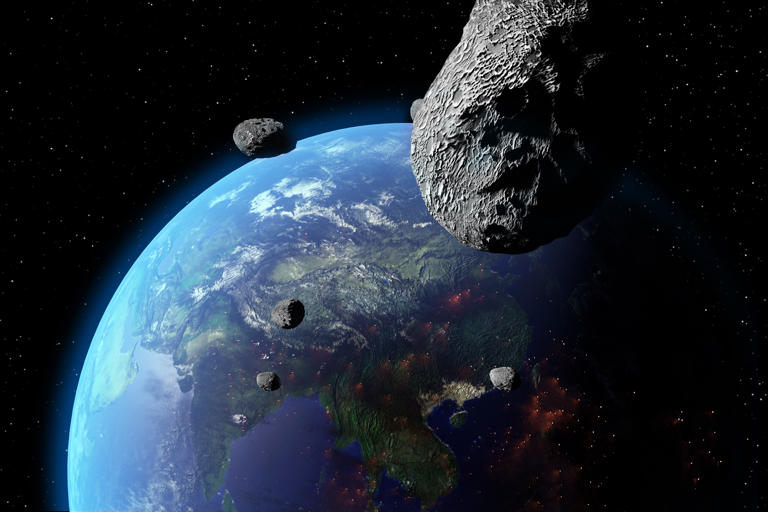A large asteroid with a diameter ranging from 460 to 1,050 feet is scheduled to pass close to Earth on October 17, 2023, at 12:30 AM. Although "close" in cosmic terms still means hundreds of thousands of miles away, this asteroid is expected to come within 730,000 miles of Earth, which is about three times the distance between the Earth and the moon.
The National Aeronautics and Space Agency predicts that the asteroid will not come this close to Earth again until 2163 when it is expected to pass within approximately 400,000 miles. Asteroid 1998 HH49 is expected to pass close to Earth in 2023, not 2021, 2025, or 2027. The passage of this asteroid is expected to be at a distance of approximately 730,000 miles from Earth, which is about three times the distance between the Earth and the moon.
NASA forecast that the asteroid will not come this close to Earth again until 2163 when it is expected to pass within approximately 400,000 miles. Asteroids are small rocky bodies that orbit the sun and are made up of materials left over from the formation of the solar system. They are typically found in the main asteroid belt, which is located between Mars and Jupiter.
Near Earth Objects
However, due to their small size and relative fragility, the orbits of asteroids can sometimes be disturbed and may intersect with the orbits of planets. This can result in asteroids coming close to Earth or even potentially impacting the planet. Jay Tate, the director of the U.K.'s Spaceguard Center observatory, previously explained that asteroids are "bits of a planet that didn't happen."
The orbits of asteroids can be affected by the gravitational influence of other planets, which can cause them to enter the inner solar system and come closer to Earth. These asteroids are known as Near-Earth Objects (NEOs), as per The Skyline. When an asteroid comes within 4.6 million miles of the Earth's orbit and is larger than 460 feet in diameter, it is classified as a "potentially hazardous" object due to the potential for it to impact the Earth.
Asteroid 1998 HH49 falls into this category due to its size and expected close approach to Earth in 2023. It's important to note that the classification of an asteroid as "potentially hazardous" does not necessarily mean that it poses an immediate threat to Earth. Rather, this classification is based on the fact that the asteroid's orbit may intersect with Earth's orbit at some point in the future, potentially leading to an impact.

Illustration of asteroids approaching Earth. Over 30 "potentially hazardous" Near-Earth Objects are expected to approach Earth in 2023, but they will still be hundreds of thousands of miles away.
ALSO READ: NASA to Launch Psyche Mission to Explore the 'Golden Asteroid' Worth $10,000 Quadrillion
Asteroids To Pass by Earth
Paul Chodas, the manager of NASA's Center for Near-Earth Object Studies, previously explained that the potentially hazardous designation simply means over many centuries and millennia the asteroid's orbit may evolve into one that has a possibility of affecting the Earth. Based on NASA's NEO Earth Close Approaches information system, there are around 30 "potentially dangerous" asteroids that will hover over Earth in the forthcoming year, but most of them will yet be millions of miles away.
The closest approach after 1998 HH49 will be from asteroid 2011 AG5, which is estimated to be between 360 and 820 feet in diameter and is expected to come within 1.1 million miles of Earth. Two asteroids are expected to come closer to Earth than 1998 HH49. The first is the asteroid 2020 DG4, which is predicted to come within 340,000 miles of Earth. However, it is much smaller than the 1998 HH49, with an estimated diameter of 20 to 46 feet.
The second asteroid is also smaller than 1998 HH49, with an estimated diameter of between 18 and 41 feet. While these asteroids are approaching relatively close to Earth in cosmic terms, it is still highly unlikely that any of them will impact the planet in the next century. According to NASA's Planetary Defense Coordination Office, the probability of an asteroid impact occurring is very low.
RELATED ARTICLE: Asteroid Launcher: The Interactive Simulator That Lets Users See What Could Happen If A Space Rock Hit Their Town
Check out more news and information on Asteroids in Science Times.














